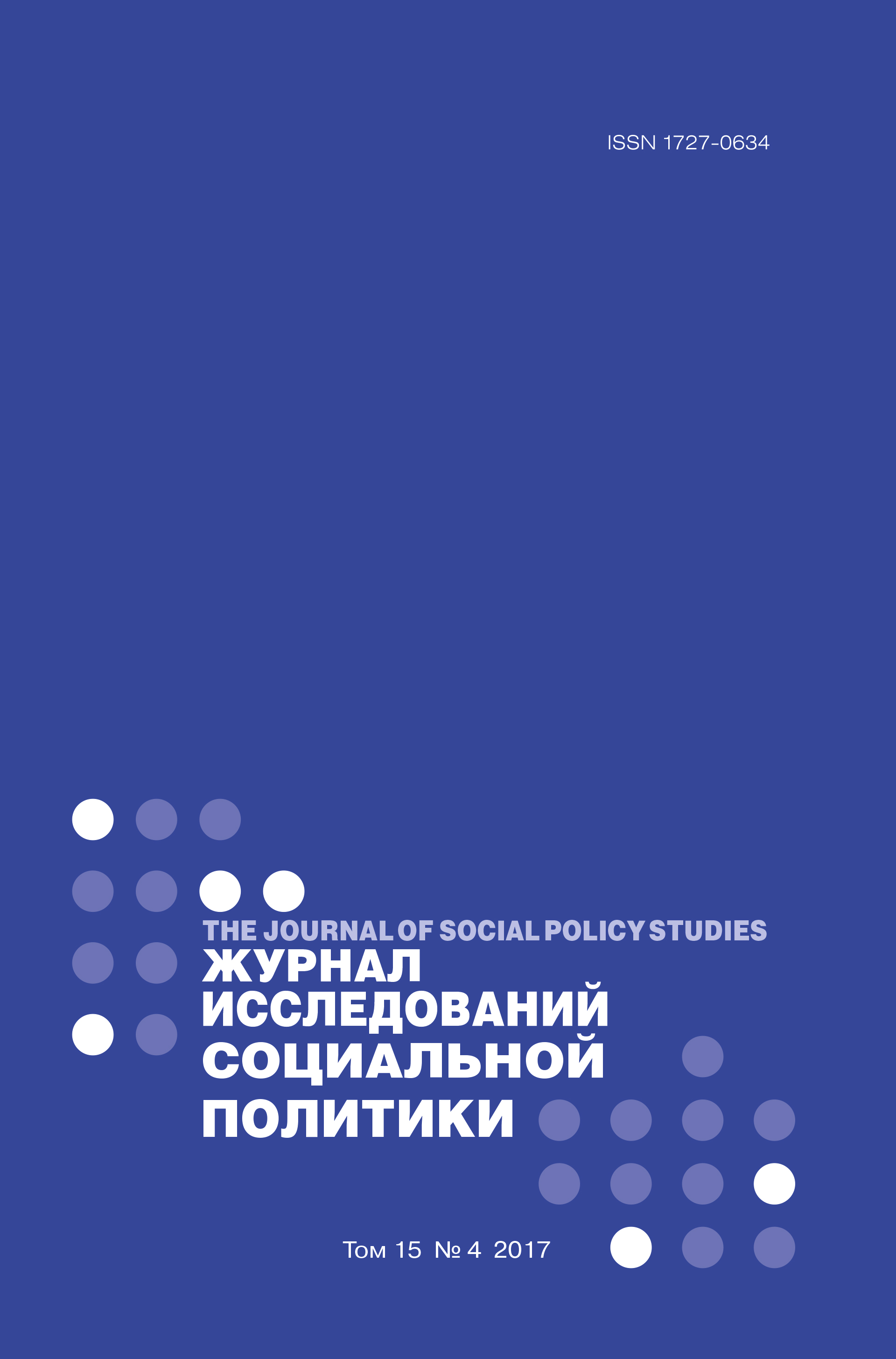The Development of Alternatives of Social Protection System
Abstract
Tatiana Maleva – PhD (Economic), Head of Institute of Social Analysis and Forecasting of The Russian Presidential Academy of National Economy and Public Administration, Moscow, Russian Federation. Email: maleva-tm@ranepa.ru
Elena Avraamova – Dr. Sci. (Economic), Head of Department of Research for Social Development Institute of Social Analysis and Forecasting of The Russian Presidential Academy of National Economy and Public Administration, Moscow, Russian Federation. Email: avraamova-em@ranepa.ru
DOI: 10.17323/727-0634-2017-15-4-559-572
Given conditions of economic recession and, in particular, the growth in the number of the poor, systemic dysfunctions in social protection have become noticeable. The most serious of these are structural and caused by mistakes in compiling the list of people to be included as beneficiaries of social protection measures. Many poor people do not receive assistance and financing is in decline, resulting in increasingly ineffective social protection. Growing poverty, on the one hand, and structural dysfunctions, on the other, both demand reform of social protection to achieve improved efficiency. The main subject of this article is alternatives to social protection development. The first fork in the choice of directions of social protection system (SPS) is determining who is the primary accounting unit: the individual or the household. The household can appear to be a more logical choice that requires the application of methods of integrated estimation of household welfare. Several such techniques exist that take into consideration not only the incomes of household members but also indicators reflecting the amount of savings, housing conditions, property security, etc. Another alternative is choosing between the approach based on needs and the approach from the position of social exclusions. A system of social protection should provide not only the minimal level of income, but also access to recourses such as education, employment, and healthcare. The final consideration of SPS development is in the definition of its main providers: either the government, or wider set of participants such as non-commercial organisations, business, volunteers and etc. Primary orientation on the public authorities as the main provider of social services creates a problem: there is a lack of appropriate services and their quality is subject to degradation. The transition to addressing the principal, accounting of social exclusion, and expanding the number of social services providers are all measures that have the potential to meet the current challenges in the provision of the effective social protection system.















